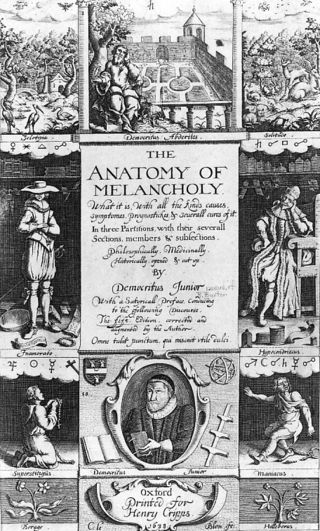Psychosis
The Diametric Model of Literature
Literary classics span the whole range of mentalism from autism to psychosis.
Posted January 10, 2020
In previous posts, I argued that two of the greatest classics of English literature, Daniel Defoe’s Robinson Crusoe and Jonathan Swifts Gulliver’s Travels, owed much of their remarkable success to being depictions of autism, with Defoe’s hero being based on an actual autistic person, Alexander Selkirk, and Swift being posthumously diagnosed as an Asperger’s case. But the symmetry of the diametric model (below) implies that you ought to be able to find parallel classic works that portray psychosis and indeed owe their appeal to it. And in fact, you can.

Cervantes’ Don Quixote has been described as the world’s first modern novel, which runs to around a thousand pages in length, and has been translated into over one hundred and forty languages, making it one of the world’s most translated books after the Bible. It is regularly voted the best book in the world, and 6 out of 10 Spaniards claim to have read part or all of this classic text, with Cervantes being to Spanish literature what Shakespeare is to English. And Don Quixote does indeed represent the diametric opposite of autism: psychosis. Throughout the book, the hero is described by all and sundry—but by his unfortunate squire Sancho Panza most of all—as completely mad.

The iconic episode of Don Quixote’s insanity is his tilting at windmills. The Don has read too many romances and has believed them too literally: an illustration of the fact that, if literacy promotes mentalism, it can also on occasions be held responsible for hyper-mentalism. Excessive reading, according to this way of looking at it, can damage not only your eyes but your mind as well! In any event, the Don’s mind is permanently stuck in hyper-mentalistic mode, with mechanistic attention to the devil-in-the-detail left to be voiced by Sancho Panza.
Specifically, Don Quixote shows symptoms of paranoia in attacking windmills as fearsome giants—not to mention the visual deficits that are found in some psychotics by contrast to the visual acuity of many autistics. More generally, he believes that he is the victim of sorcery and evil magic of all kinds. His belief that a common peasant girl is his idealized lover, Dulcinea del Toboso, is essentially erotomanic, and at the very least is founded on the delusion that he can win her love through his chivalric exploits. His megalomania and delusions of grandeur turn common inns into castles, an old bowl into his knight’s helmet, and his aged nag into a mettlesome steed. In his own eyes, he is the epitome of chivalry, even if to others he is a demented old man.
Part of the secret of the success of this classic story is perhaps that it presents Don Quixote so sympathetically and without the weirdness and wildness that goes with unvarnished psychiatric case histories. Viewed with the benefit of the hindsight of the diametric model of mental illness, Cervantes seems to have implicitly understood Don Quixote’s madness as hyper-mentalism—in other words, as a caricature of normal mentalism exaggerated to psychotic proportions. The Don is a believable, sympathetic figure because he just takes what is normal to ridiculous extremes by ignoring the difference between the real and the imaginary—and thereby of course, also becomes a wonderfully comic character.
"Comic" is also a word that you could apply to Tristram Shandy, a classic of English literature whose author, Laurence Sterne, described his work as “Cervantick.” Certainly, all the characters, including the narrator/hero, are quixotic—particularly Uncle Toby, whose military fantasies involving model earth-works constructed by his Sancho Panza, Corporal Trim, figure prominently despite the fact that he literally cannot bring himself to hurt a fly. Just like Don Quixote, Uncle Toby may be mad, but he is also lovable in the way in which elderly eccentrics can be.
Nevertheless, the style of writing could not be more different from Cervantes’—even if you could call it quixotic—thanks to its total disorganization, complete lack of plot, and eccentricity. The hero’s birth is not reported until Volume III; the book’s Preface follows Chapter LXIV; and marbled endpapers and blacked-out pages occur within the text! In fact, to the eyes of a modern reader, the narrative reads like free-association or a stream of consciousness, and the textual and visual jokes are highly reminiscent of modern art movements, notably Dada or Surrealism.

Sterne’s work is satirical, and I quoted him ridiculing the homuncular view of development in a previous post. Indeed, it is also reminiscent of Szathmári’s Voyage to Kazohinia to the extent that both books could be seen as send-ups of hyper-mentalism: in Sterne’s case, principally such works as Burton’s Anatomy of Melancholy (left). As the editor of the Penguin edition of Tristram Shandy comments: “Sterne is the eminently ‘sane’ writer pretending to be ‘mad’ (a formal lesson he learned from Cervantes and Swift…).” Not to mention Burton, who, as a self-diagnosed depressive with symptomatic manic hypergraphia, was to that extent definitely on the psychotic side of the spectrum. Burton himself confessed that “I write of melancholy by being busy to avoid melancholy…” One of his editors concludes that The Anatomy of Melancholy, with its conversational, compulsively discursive style, can be seen as Burton’s equivalent of a "talking cure": a writing one.
Henry Fielding (1707-54), author of Tom Jones, comments in his Preface to Joseph Andrews that “Mirth and Laughter … are probably more wholesome Physic for the Mind, and conduce better to purge away Spleen, Melancholy and ill Affections, than is generally imagined.” If The Anatomy of Melancholy can hardly be seen as therapeutic in this respect, then Tristram Shandy certainly can—as indeed can the comic aspects of satires such as Gulliver’s Travels, Voyage to Kazohinia, and Gulliver’s Return.
But Burton and Sterne are not alone in portraying the psychotic extreme of the mentalistic continuum, even if they are the closest—and certainly the classic—equivalents of Defoe or Swift in English literature. Many, much more modern writers continued the hyper-mentalistic trend, which emerged in Western literature from the nineteenth century. Examples are Nikolai Gogol, Antonin Artaud, Eugene Ionesco, Franz Kafka, August Strindberg, James Joyce, Samuel Beckett, and of course the Surrealists and writers associated with them, such as Alfred Jarry and Raymond Roussell.
But the case of Joyce—not to mention that of his compatriot Samuel Beckett, also posthumously diagnosed autistic—suggests that the language of modern mentalism has been extended in the hypo-mentalistic direction just as far. Indeed, Amar Annus has recently published a study which cogently argues this in the case of the Finnish poet, Pentti Saarikoski (1937-1983). Overall, you could claim that the genius of modern—and certainly of modernist—literature is its ability to take it to both extremes of the continuum, just as the diametric model proposes is the case in genius in general.
Perhaps most importantly of all, looking at literature this way rebuilds critical theory on a firm foundation in the diametric model—and thereby on genetics, neuroscience, and evolutionary biology. Indeed, you could see this as something which embraces the two fundamental forms of literacy discussed in previous posts: verbal and genetic. What other approach does any of this?




